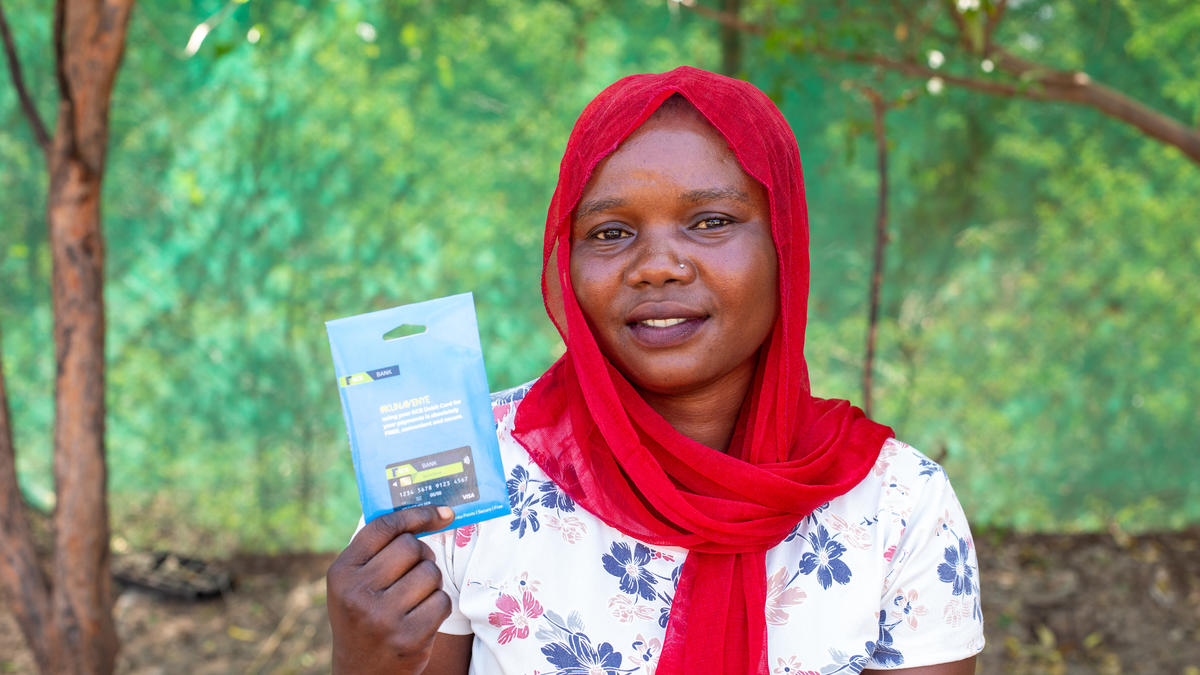الحماية الاجتماعية
الحماية الاجتماعية

تؤدي المساعدة التي تقدمها المفوضية في جميع أنحاء العالم نفس الدور الذي تؤديه الحماية الاجتماعية على مدى سنوات عديدة.
وقد دأبت المفوضية على تنفيذ الأنشطة التي تكرر أو تدعم البرامج الوطنية لجموع الوافدين حديثاً في حالات الطوارئ وللآخرين ممن يتواجدون في حالات لجوء طال أمدها، أو المساهمة فيها.
مع ذلك، فإن معظم اللاجئين يعيشون في أوضاع مطولة، وتسعى نسبة صغيرة منهم إلى إيجاد حلول دائمة لأنفسهم. لذلك، فإن شملهم في أنظمة الحماية الاجتماعية، المدعومة باستثمارات التنمية الدولية، يمكن أن يساهم في إيجاد بدائل أكثر قابلية للتنبؤ للمساعدة الإنسانية.
تعمل المفوضية بشكل متزايد مع الحكومات والجهات الفاعلة الدولية لتعزيز سبل الوصول إلى أنظمة الحماية الاجتماعية الوطنية للنازحين قسراً والسكان المضيفين لهم.
الحماية الاجتماعية هي مجموعة من السياسات والبرامج التي تقودها الحكومة والتي تهدف إلى تفادي وقوع كافة الأشخاص في الفقر والضعف والاستبعاد الاجتماعي طوال حياتهم، أو حمايتهم من ذلك، مع التركيز على مجلس التنسيق المشترك بين الوكالات للحماية الاجتماعيةLink is external، للفئات الأكثر ضعفاً.
إن إدراج النازحين قسراً في برامج الحماية الاجتماعية التي تقودها الحكومة يمكنه أن يساهم بشكل كبير في تحسين نتائج الحماية والحلول، لا سيما في حالات النزوح التي طال أمدها.
دور المفوضية في الحماية الاجتماعية
تعمل المفوضية على دعم استراتيجيات الحماية والحلول الوطنية من خلال:
- المواءمة التدريجية للمساعدة التي تقدمها المفوضية مع برامج الحماية الاجتماعية، وإنشاء أنظمة للإحالة بحيث تحضّر إدراج النازحين قسراً في الأنظمة الوطنية وترافقهم في ذلك.
- مساعدة الحكومات والجهات الفاعلة الإنسانية والإنمائية على تعزيز أنظمة الحماية الاجتماعية الوطنية لديها ودعم إدماج اللاجئين حيثما تسمح الظروف بذلك.
- الاستفادة من الأنظمة الوطنية للتأهب والاستجابة لحالات الطوارئ (بما في ذلك الحماية الاجتماعية سريعة الاستجابة للصدمات) وذلك لتوسيع نطاق المساعدة للأشخاص الواصلين حديثاً، وإدارة تأثير الكوارث على الأشخاص ممن طالت فترة نزوحهم.
- ضمان العمل المنسق والمتناسق من قبل جميع الجهات الفاعلة عبر العلاقة بين العمل الإنساني والتنمية والسلام دعماً لخطط العمل الانتقالية التي تقودها الحكومة.
- ضمان استمرار الدعم المناسب عندما لا تتمكن الحكومات من تلبية احتياجات النازحين قسراً بشكل كامل.
كيف تدعم المفوضية أنظمة الحماية الاجتماعية الوطنية
تعمل مكاتب المفوضية داخل البلدان على مواءمة أنشطتها وربطها ببرامج الحماية الاجتماعية الحكومية، ودعم الإجراءات التالية حيثما كان ذلك مناسباً وممكناً:
- جدوى الإدماج في أنظمة الحماية الاجتماعية: تجري المفوضية تقييماً لقدرات أنظمة الحماية الاجتماعية الوطنية والثغرات القائمة فيها، حيث تحدد وضع الوصول القانوني والفعال إلى سبل الحماية الاجتماعية من قبل النازحين قسراً، وإجراء عمليات جمع للبيانات وتحليلها ووضع نماذج لإدراجها في السجلات الاجتماعية وعمليات تحديد الأهلية، وتحديد نطاق المواءمة مع أنظمة الحماية الاجتماعية الوطنية والاندماج فيها.
- دعم الإدماج في برامج الحماية الاجتماعية الحكومية: تساعد المفوضية على تعديل تصميم البرامج ليناسب احتياجات اللاجئين، وتعزز قدرة فرق الوكالات الدولية وتلك التابعة للحكومة، وتسهل خطط العمل الانتقالية وعمليات الإحالة (بما في ذلك تلبية معايير تحديد الهوية) وتساعد على رصد بيئة الحماية وتأثيرات الإدماج على اللاجئين.
- المواءمة والانتقال من توفير المساعدات القائمة على النقد إلى المساعدة الاجتماعية: تعمل المفوضية على إنشاء شبكات أمان انتقالية للنازحين قسراً والذين يتخلفون عن الركب؛ ومواءمة المساعدات القائمة على النقد مع برامج المساعدة الاجتماعية الحكومية، وتعزيز استخدام المساعدات النقدية للتخفيف من آثار الصدمات، والحفاظ على الموارد وتعزيز الاعتماد على الذات. كما تعمل مع الجهات التنظيمية والبنوك المركزية لتمكين اللاجئين وغيرهم من الأشخاص الذين تعنى بهم المفوضية من الحصول على الهاتف المحمول أو الحسابات المصرفية أو المحافظ النقدية المحمولة.
- الوصول إلى خطط التأمين الصحي الوطنية: كجزء من نهج شامل لتعزيز التغطية الصحية الشاملة، تعمل المفوضية مع منظمة العمل الدولية لتحديد فرص إدراج اللاجئين في خطط الحماية الصحية الاجتماعية الوطنية، وتقييم قدرتهم على المساهمة في تكاليف الرعاية الصحية الخاصة بهم على قدم المساواة مع المواطنين ذوي الوضع الاجتماعي والاقتصادي المماثل، وتحفيز الدعم للحصول على تمويل إضافي لإدماج اللاجئين من خلال دعم الجهات المانحة و/أو وكالات التنمية إذا لم تكن القدرات المحلية ممكنة.
موارد إضافية على مواقع خارجية
- مفوضية اللاجئين: الحماية الاجتماعية وإدماج الأشخاص الذين تعنى بهم المفوضية (أبريل 2022)
- إدماج اللاجئين في أنظمة الحماية الاجتماعية الحكومية في إفريقيا (يناير 2021)
- الدروس المستقاة من استثمارات مجموعة البنك الدولي في مجال الحماية الاجتماعية في المناطق المضيفة للاجئين (2021)
- كتيب المفوضية ومنظمة العمل الدولية بشأن الحماية الاجتماعية الصحية للاجئين: النهج والدروس المستقاة والأدوات العملية لتقييم خيارات التغطيةLink is external (2020)
- دعم المفوضية وبرنامج الأغذية العالمي لإدماج اللاجئين في السجل الاجتماعي في موريتانيا (2023)
- مفوضية اللاجئين في العراق: إدماج النازحين داخلياً في شبكة الأمان الاجتماعي الوطنية - من المساعدة المالية الإنسانية قصيرة الأمد إلى الحماية الاجتماعية المستدامةLink is external (أغسطس 2023)
- تجربة شركة ليسونغي للإدماج في الحماية الاجتماعية في جمهورية الكونغو الديمقراطيةLink is external (2022)
- المساعدة الإنسانية وشبكات الأمان الاجتماعي في حالات اللجوء المطولة: دراسة حالة للمفوضية ومجموعة البنك الدولي في العراقLink is external (2020)
- المفوضية ومجموعة العمل النقدية: إدماج اللاجئين والمهاجرين الفنزويليين في البرازيلLink is external (2020)
- المنتدى العالمي للاجئين: بناء القدرة على الصمود من خلال الإدماج في الحماية الاجتماعية الوطنيةLink is external (2023)
- أجندة 2030: عدم ترك أحد خلف الركب - حوار عبر الإنترنت حول الحماية الاجتماعية الشاملة للأطفال النازحين وأسرهمLink is external (2023)
- التعلم من برنامج التدريب على الأدلة المتعلقة بالنزوح القسري: استجابات الحماية الاجتماعية للنزوح القسري - وزارة الخارجية البريطانية والمفوضية والبنك الدولي بناء الأدلة على النزوح القسريLink is external (2023)
- دور الحماية الاجتماعية في دعم السكان النازحين قسراً في أوقات الأزمات – المنتدى العالمي للحماية الاجتماعية التكيفية التابع للوزارة الاتحادية للتعاون الاقتصادي والتنمية والبنك الدوليLink is external (2023)
- التمويل والتنسيق المرن: ربط المساعدة الإنسانية بالحماية الاجتماعية - اتجاهات من الشرق الأوسط وشمال أفريقيا، أسابيع الشبكات والشراكات الإنسانية (2023)
- تكييف أنظمة الحماية الاجتماعية مع سياقات النزوح القسري - تبادل ممارسات GIZ ASPects حول سلسلة الندوات عبر الإنترنت للحماية الاجتماعية التكيفيةLink is external (2022)
- الحماية الاجتماعية للاجئين الأوكرانيينLink is external (2022)
- الأبحاث الناشئة حول الحماية الاجتماعية في سياقات الهشاشة والنزوح – منتدى البنك الدولي حول الهشاشةLink is external (2022)

